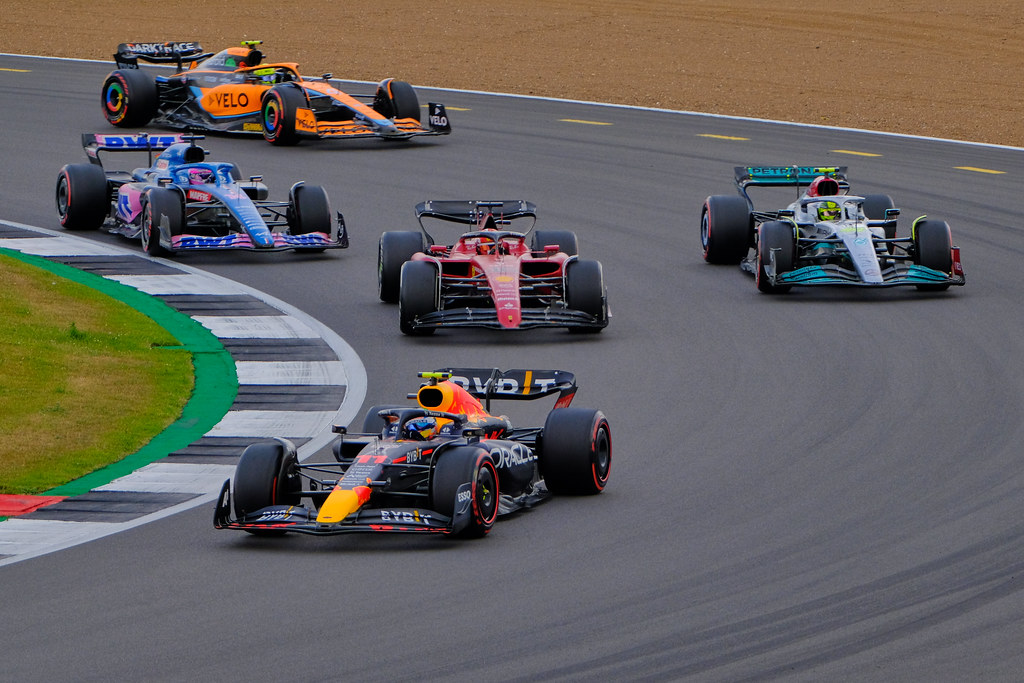
“It’s lights out and away we go,” David Croft, British Formula One announcer, said as 20 F1 cars explode off the starting grid. For longtime fans, this unmistakable saying sparks excitement. For new fans, it is an opening line for the start of an obsession.
F1 is a motorsport where 10 teams consisting of 20 drivers compete against some of the fastest cars in the world. Drivers compete in many Grand Prixs around the world, fighting for points based on how well they do in each race. Teams sponsored by famous names like Ferrari, RedBull and Mercedes all design and race these multi-million dollar cars while fans tune into the spectacle of racing in places like Monaco, Las Vegas, NV and Singapore.
F1, the world’s most luxurious motorsport, has gained significant popularity since the release in 2019 of “Drive to Survive,” an F1 documentary on Netflix. “Drive to Survive” follows each of the drivers as viewers get an inside look into what is going on behind the scenes. However, the sport has had longtime fans and has been captivating people for decades, as F1 debuted in 1950.
For John Capra, professor of communication at Point Loma Nazarene University, watching racing has been a part of his life.
“I got into watching Formula One through my dad,” Capra said. “My dad was watching it my whole life, and it was before the days of being able to record it.”
Capra said he dove back into it during COVID-19 with “Drive to Survive.” He wanted to get his wife into watching F1 as well.
“It was short-lived, but when we first got married, I wanted to get my wife into it so we tried to cook a dish from what country they were racing in,” Capra said.
Now, Capra and his wife typically have a weekend rhythm of watching.
“What kept me watching it is that it is just unique. There is something for everyone with F1,” Capra said. “There’s obviously really great racing, and there’s a cultural component as well in which you’re getting to be immersed in different cultures week to week; they go to vastly different places.”
The blend of drama, culture and high-stakes competition is what keeps fans immersed in the sport. Second-year students Sophia Sandoval, a kinesiology major; Hailey Berkson, a writing major; and Emma Wood, an education major, all started watching F1 together about a year ago.
“Honestly, I saw a post on Instagram, and it kind of just spiraled from there,” Sandoval said.
Wood said Sandoval would show her photos from F1 and social media posts, which helped get her into watching.
“It was something new to get into. It was a collective pursuit of knowledge for us,” Wood said.
Berkson said she has seen an increase in people who watch F1.
“I feel like a lot of fashion has gone into it. I’ve seen McLaren and RedBull team sweatshirts at Hollister and American Eagle,” Berkson said. “There’s definitely more awareness around it now.”
The growth is hard to ignore, as there has been a 58% increase in viewership since 2021 and a record-breaking 2022 season of viewership in the U.S., according to F1TV. Since it has increased significantly, there are now three Grand Prix held in Austin, TX, Miami, FL, and Las Vegas, NV.
It is not just about the lap times and pit strategies, but it includes people behind the helmet and the stories on and off the track.
As the 2025 season kicked off on March 16, the drivers are ramping up and showcasing their skills for what promises to be an action-packed and competitive season. Max Verstappen, a familiar name to some and a reigning F1 champion, is still dominant. However, drivers like Lando Norris and Oscar Piastri from McLaren seem to have promising cars and a prosperous future ahead.
As the season charges ahead and the paddock gets fired up for another race weekend, those who have been watching since childhood and those just discovering it are brought in for the fast and thrilling sport.
